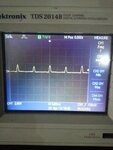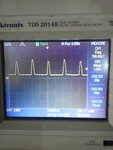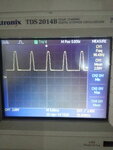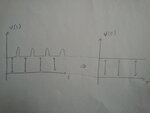muhibraza
Member level 1
Hello,
I have the following signal at adc channel 1 input of PIC18F26K22 Microcontroller:



now the problem is that I need to read only a dc value on which the varying signal is imposed upon. Like this

So can anyone guide me what are the possible methods for getting this information out of the signal ? (hardware or software, any methods)
I think I can use a large value capacitor in parallel with the signal such that it would chop all the frequencies above 1 or 2 Hz.... but again, the output would be filtered but not to the desired value as I have shown, because the capacitor would charge up to the peak of this signal hence the original value would still not be achieved... Am I right ?
also please let me know if there is any software method for this for example taking many samples in one time period and then checking the rate of change (or the slope) and when the slope equals zero then we know the required value etc is this possible ? if yes then how ?
I have the following signal at adc channel 1 input of PIC18F26K22 Microcontroller:



now the problem is that I need to read only a dc value on which the varying signal is imposed upon. Like this

So can anyone guide me what are the possible methods for getting this information out of the signal ? (hardware or software, any methods)
I think I can use a large value capacitor in parallel with the signal such that it would chop all the frequencies above 1 or 2 Hz.... but again, the output would be filtered but not to the desired value as I have shown, because the capacitor would charge up to the peak of this signal hence the original value would still not be achieved... Am I right ?
also please let me know if there is any software method for this for example taking many samples in one time period and then checking the rate of change (or the slope) and when the slope equals zero then we know the required value etc is this possible ? if yes then how ?